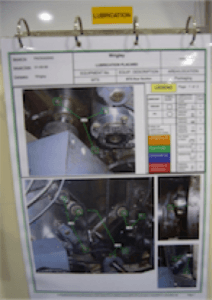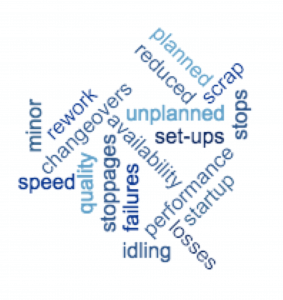Address Old Problems with The Six Big Losses in Manufacturing
The Six Big Losses are a framework developed by the Japan Institute of Plant Maintenance in the 1970’s, which defines the losses in manufacturing and provides guidelines as how to examine efficiency problems. The framework is about emphasising proactive improvements around having fewer defects, stoppages and breakdowns.
In addressing the Six Big Losses, the challenge is in determining the root-cause and the extent of the problem. By using this framework the issues can be broken into into groups and then implement improvements for sustain change.
The framework looks at the losses in categories of Availability, Performance and Quality. Each category is split into groups:

Availability Losses
1. Equipment failures/Unplanned Stops
2. Set-up and changeovers/Planned Stops
Performance Losses
3. Idling and minor stoppages
4. Reduced speed
Quality Losses
5. Scrap/rework
6. Startup losses
Availability Loss
When it comes to the availability of a process, it is critical to understanding the causes of that loss and to define the time spent during unplanned stops and also knowing the time it takes to perform any planned setup/changeover events. Reducing the time for unplanned and planned events increases the running time available to production.
Big Loss No. 1: Equipment Failures or Unplanned Stops
It is important to identify equipment failures or downtime into separate events and to measure the time taken for each event to understand the causes. Collecting and recording these events on the charts or into production software is an important step in understanding the facts. Examples of equipment failure include tooling failure, breakdowns, and unplanned maintenance, no operators or materials, lack of parts or failure of downstream equipment.
Big Loss No. 2: Setup and Change Overs
The largest source of downtime is typically changeover events and are often referred to as “make ready” or “setup” depending on the industry. Changeovers can be improved greatly and are addressed through the use of SMED (Single-Minute Exchange of Dies) programs. Changeover events are planned however when there is no target time and no real-time visibility, this time becomes difficult to improve over time. Common reasons for longer changeovers are major adjustments, tooling adjustments, cleaning, warmup time and quality inspections.
When actual changeover times are compared against targets, improvements can be made to reduce setup times and increase machine availability. Examples of improvements can include setup instructions, first article reports and feedback on actual changeover performance against targets.
Performance Losses
Big Lost No. 3: Idling and Minor Stoppages or Small Stops
Idling and minor stoppages typically leads to other costly problems. This is one of the easiest areas for improvement and in most cases, taking corrective action involves simple changes in working practices rather than costly equipment upgrades. However, to achieve sustainable improvements in this area, information must be captured as the minor stops occurs quickly and can easily be missed or thought of as just part of the process. Documenting this to indicate the time and the reasons for stoppages is the place to start.
Big Loss No. 4: Reduced Speed Operation
The objectives for manufacturers is to improve the speed of an operation. However, there is a balance to achieve between the optimal efficiency of an individual piece of equipment and product quality produce for a process. Having the ability to see real-time line speeds can have a dramatic effect on performance. Common reasons for reduced speed include unclean machines, worn equipment, lubrication, materials, environmental conditions, operator experience, general startup and shutdown methods.
Quality Loss
Big Loss #5: Scrap and Rework
In terms of scrap and rework, knowing the amount of the loss is not enough. To improve performance accurate indications and the sources of the loss are required. Reviewing and reporting of poor quality is included into the quality system and corrective actions are implemented to correct the part and to improve the process. Examples of common reasons for scrap and rework include incorrect settings, handling errors, and poor setup.
Big Loss # 6: Startup Losses
In every startup routine there are losses in starting up a process. To get a line running at full running speed requires operators to set up the line and losing product is often part of the process. Having greater visibility of the startup conditions for the line is important to understanding expected losses. Embedding the use Standard Operating Procedures (SOPs) can help define exactly how the line is to be set up, in order to minimise the amount of waste during startup conditions. Common reasons for start up include poor changeovers, incorrect settings, startup cycles, or equipment wear.
Summary
By considering the “Six Big Losses” framework as a guide for continuous improvement, efficiencies can be found to improve capacity, reducing costs and increasing profitability.





